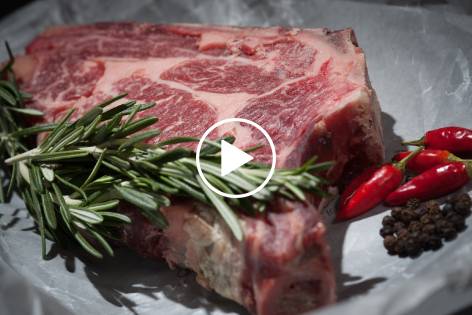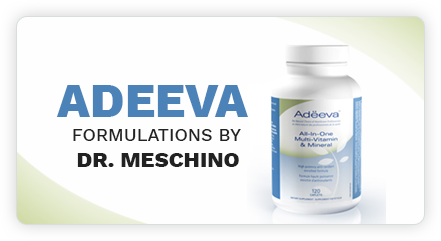
LMU 138 – The Evolutionary Link Between Red Meat and Heart Health: Unveiling the Neu5Gc Connection
Source: Proceedings of the National Academy of Sciences (July 22, 2019)
Lifestyle Medicine Update (August 10, 2019)
Introduction:
Embark on a voyage tracing back millions of years, unravelling the intricate tapestry of human evolution. A revelation emerges—a protein named Neu5Gc, encoded by the elusive CMAH gene, fades into obscurity within the annals of history. Millennia ago, our ancestors witnessed a genetic twist, bestowing them with a shield against a specific strain of malaria. This transformative shift resonates through the ages, ushering Neu5Gc into modern times, as a hidden player in the tale of red meat and heart health.
Neu5Gc: The Hidden Protein
Red meat, a culinary delight, harbours a secret guest—Neu5Gc. As we savor beef, pork, or lamb, this protein finds its way into our bodies. Strikingly, our system perceives Neu5Gc as foreign—a trigger that awakens our immune response. The consequence is the emergence of systemic inflammation, a catalyst for heart attacks, cancer, and type 2 diabetes—a trio of adversaries that threaten our well-being.
Unravelling the Web: Red Meat and Health
In this intricate dance between red meat and health, the threads of epidemiological studies intertwine, weaving a compelling narrative. A surge of evidence emerges, revealing a stark correlation between red meat consumption and a host of ailments. Carcinomas loom large—especially liver cancer—alongside the shadows of atherosclerosis, type 2 diabetes, and even mortality’s embrace. The link between red meat and heart attacks stands resolute, echoing in the disparity between humans and Neu5Gc-producing mammals.
A Unique Human Predicament: Heart Health and Neu5Gc
Amongst the symphony of heart health and Neu5Gc, a poignant melody resonates—Naturally occurring heart attacks remain alien in the world of mammals. Chimpanzees, akin to us, share parallel risk factors, yet the script of atherosclerosis eludes them. A revelation unfurls—red meat emerges as the elusive catalyst, stoking inflammation, impairing blood vessel function, and painting the backdrop for heart attacks.
The Dawn of Discovery: Unveiling the Link
A pivotal moment unfolds, etched in the annals of discovery—July 22, 2019, marked a milestone. A tale of mice, genes, and red meat unveils itself. The canvas of the Proceedings of the National Academy of Sciences bears witness—a single gene deletion ignites a twofold surge in atherosclerosis. The narrative deepens as red meat’s role takes center stage—those feasting on Neu5Gc-rich diets experience an exponential 2-4-fold surge, a story untold by cholesterol, triglycerides, or sugars.
Inflammation and Beyond: The Quest for Heart Health
The echoes of research resound a clarion call to embrace a holistic approach to heart health. A chapter of wisdom unfurls—red meat, a villain in this tale, emerges as an independent risk factor for heart attacks. A choice lingers—will the symphony of health be led by the strains of red meat or the rhythm of longevity? As the pages of research turn, a chorus rises, inviting us to consider, to adapt, and to transcend—an ode to well-being, carved through the choices we make.
Conclusion: A New Chapter of Wellness
As we bid adieu to this exploration, a door ajar invites reflection. The tale of Neu5Gc, red meat, and heart health remains incomplete—a narrative awaiting our choices, our strides towards a life of vibrancy. The journey towards well-being extends beyond the plate, unfurling the script of longevity—one where red meat, limited or omitted, emerges as a cornerstone. In the symphony of health, may our notes resonate, guiding us towards a crescendo of wellness.
References:
Kunio Kawanishi, Chirag Dhar, Raymond Do, Nissi Varki, Philip L. S. M. Gordts, Ajit Varki. Human species-specific loss of CMP-N-acetylneuraminic acid hydroxylase enhances atherosclerosis via intrinsic and extrinsic mechanisms. Proceedings of the National Academy of Sciences, 2019; 201902902 10.1073/pnas.1902902116
Samraj AN, Pearce PM, Laubli H, Crittenden AN, Bergfeld AK, Banda K, et al. A red meat-derived glycan promotes inflammation and cancer progression. Proc Natl Acad Sci USA. 2015 Jan 13: 112(2): 542-547. [Link](https://www.ncbi.nlm.nih.gov/pmc/articles/PMC4299224/)
Eat Smart, Live Well, Look Great,
Dr. Meschino
Introduction:
Embark on a voyage tracing back millions of years, unravelling the intricate tapestry of human evolution. A revelation emerges—a protein named Neu5Gc, encoded by the elusive CMAH gene, fades into obscurity within the annals of history. Millennia ago, our ancestors witnessed a genetic twist, bestowing them with a shield against a specific strain of malaria. This transformative shift resonates through the ages, ushering Neu5Gc into modern times, as a hidden player in the tale of red meat and heart health.
Neu5Gc: The Hidden Protein
Red meat, a culinary delight, harbours a secret guest—Neu5Gc. As we savor beef, pork, or lamb, this protein finds its way into our bodies. Strikingly, our system perceives Neu5Gc as foreign—a trigger that awakens our immune response. The consequence is the emergence of systemic inflammation, a catalyst for heart attacks, cancer, and type 2 diabetes—a trio of adversaries that threaten our well-being.
Unravelling the Web: Red Meat and Health
In this intricate dance between red meat and health, the threads of epidemiological studies intertwine, weaving a compelling narrative. A surge of evidence emerges, revealing a stark correlation between red meat consumption and a host of ailments. Carcinomas loom large—especially liver cancer—alongside the shadows of atherosclerosis, type 2 diabetes, and even mortality’s embrace. The link between red meat and heart attacks stands resolute, echoing in the disparity between humans and Neu5Gc-producing mammals.
A Unique Human Predicament: Heart Health and Neu5Gc
Amongst the symphony of heart health and Neu5Gc, a poignant melody resonates—Naturally occurring heart attacks remain alien in the world of mammals. Chimpanzees, akin to us, share parallel risk factors, yet the script of atherosclerosis eludes them. A revelation unfurls—red meat emerges as the elusive catalyst, stoking inflammation, impairing blood vessel function, and painting the backdrop for heart attacks.
The Dawn of Discovery: Unveiling the Link
A pivotal moment unfolds, etched in the annals of discovery—July 22, 2019, marked a milestone. A tale of mice, genes, and red meat unveils itself. The canvas of the Proceedings of the National Academy of Sciences bears witness—a single gene deletion ignites a twofold surge in atherosclerosis. The narrative deepens as red meat’s role takes center stage—those feasting on Neu5Gc-rich diets experience an exponential 2-4-fold surge, a story untold by cholesterol, triglycerides, or sugars.
Inflammation and Beyond: The Quest for Heart Health
The echoes of research resound a clarion call to embrace a holistic approach to heart health. A chapter of wisdom unfurls—red meat, a villain in this tale, emerges as an independent risk factor for heart attacks. A choice lingers—will the symphony of health be led by the strains of red meat or the rhythm of longevity? As the pages of research turn, a chorus rises, inviting us to consider, to adapt, and to transcend—an ode to well-being, carved through the choices we make.
Conclusion: A New Chapter of Wellness
As we bid adieu to this exploration, a door ajar invites reflection. The tale of Neu5Gc, red meat, and heart health remains incomplete—a narrative awaiting our choices, our strides towards a life of vibrancy. The journey towards well-being extends beyond the plate, unfurling the script of longevity—one where red meat, limited or omitted, emerges as a cornerstone. In the symphony of health, may our notes resonate, guiding us towards a crescendo of wellness.
References:
- Kunio Kawanishi, Chirag Dhar, Raymond Do, Nissi Varki, Philip L. S. M. Gordts, Ajit Varki. Human species-specific loss of CMP-N-acetylneuraminic acid hydroxylase enhances atherosclerosis via intrinsic and extrinsic mechanisms. Proceedings of the National Academy of Sciences, 2019; 201902902 10.1073/pnas.1902902116
- Samraj AN, Pearce PM, Laubli H, Crittenden AN, Bergfeld AK, Banda K, et al. A red meat-derived glycan promotes inflammation and cancer progression. Proc Natl Acad Sci USA. 2015 Jan 13: 112(2): 542-547. [Link](https://www.ncbi.nlm.nih.gov/pmc/articles/PMC4299224/)
Dr. Meschino

Dr. James Meschino
ABOUT THE AUTHOR
Dr. James Meschino, DC, MS, ROHP, is an educator, author, and researcher having lectured to thousands of healthcare professionals across North America. He holds a Master’s Degree in Science with specialties in human nutrition and biology and is recognized as an expert in the field of nutrition, anti-aging, fitness, and wellness as well as the author of numerous books.


